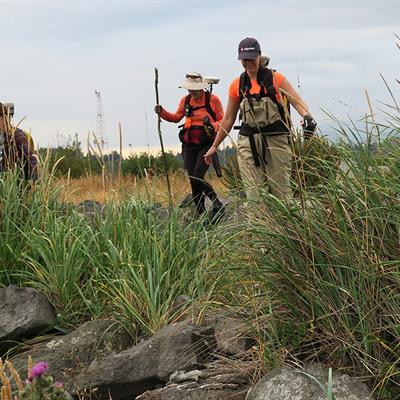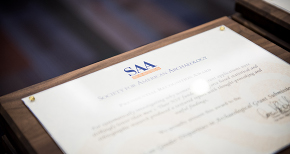Please be aware when registering, all times are in the Eastern Time Zone. Even for free events, you will need to click the "Proceed to Checkout" button and "Submit Order"
to complete your registration. If you do not receive an automated confirmation email, or if you have any questions about registration, please email
onlineseminars@saa.org.

Registration Closed!
Geophysical Remote Sensing in Archaeology: An Overview and Practical Guide for Beginners and Intermediate Users, Teachers, and Consumers
When: January 22, 2018 2:00-4:00 PM ET
Duration: 2 hours
Certification: RPA-certified
Pricing
Individual Registration: $99 for SAA members; $139 for non-members
Group Registration: $139 for SAA members; $179 for non-members
Jarrod Burks, Ph.D. is the Director of Archaeological Geophysics at Ohio Valley Archaeology, Inc. He has been conducting geophysical surveys on archaeology sites since 1998 in a wide variety of survey settings, both in terms of geology/soils and archaeological targets. He has published his research in national and international journals including American Antiquity, Archaeological Prospection, and the Journal of Archaeological Science. For the past two decades he has been an instructor at the National Park Service’s geophysics workshop for archaeology, hosted annually by the Midwest Archeological Center at a range of venues around the country.
Geophysics is finally starting to take hold in American archaeology, but there are very few opportunities for good training on how to operate the instruments, process the data, and interpret the results. The primary goal of this seminar is to provide a basic introduction to the fundamental principles of making geophysics work for archaeologists. We will focus on several basic components of good practice, including choosing an instrument, setting up a survey, collecting good data, basic data processing, and most important of all—data interpretation. A wide variety of examples and case studies will be used from all across the US, with an emphasis on the three instrument types commonly used in American archaeology: magnetometers, ground-penetrating radar, and electrical resistance meters. Doing good geophysics in archaeology is not about how many different instruments you can throw at a site, it’s about objectives and what you hope to achieve. So, it’s time to dust off that magnetometer that’s been sitting in the closet, charge up your geology colleague’s radar, and get yourself out in the field to collect some data!
After completing this course, participants will have a basic understanding of how to (1) collect, (2) process, and (3) interpret geophysical data from the three main instruments used by archaeologists: magnetometers, ground-penetrating radar, and electrical resistance meters. An emphasis will be placed on doing this with an archaeologist’s eye to understanding the archaeological record.


